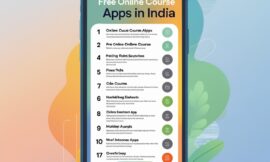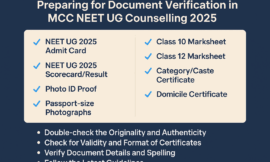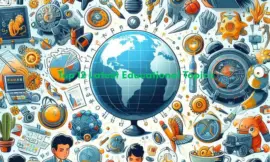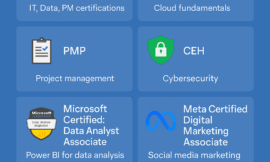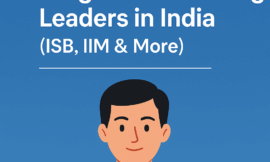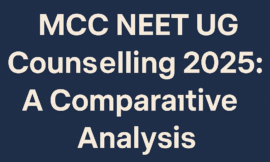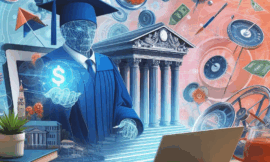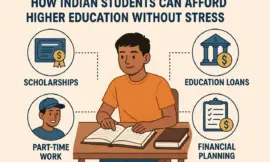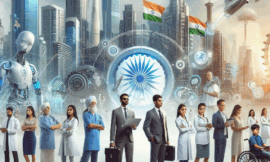Top Distance Learning Methods That Have Gained Popularity in Recent Years
Education is changing fast. With the help of technology and the internet, students today can learn from anywhere in the world. Distance learning, also known as online learning or remote education, has become very popular in recent years. From school students to working professionals, everyone is using online platforms to gain new skills and knowledge.
The COVID-19 pandemic pushed distance learning forward. But even after schools and colleges reopened, many people chose to continue learning online. Because of its flexibility and convenience. In this blog post, we will explore the most popular distance learning methods that have gained attention recently. We will also explain how they work, their benefits, and how you can make the most of them.
Top Massive Open Online Courses (MOOCs) to Boost Your Career in 2025
1. Learning Management Systems (LMS)
LMS platforms are tools that help schools and colleges manage, deliver, and track online learning. They act as a virtual classroom where teachers can upload notes, assignments, videos, and quizzes, and students can access everything in one place.
Popular LMS platforms:
- Moodle
- Google Classroom
- Canvas
- Blackboard
Why it’s popular: Easy to use, available 24/7, and useful for both teachers and students to manage their work.
2. Massive Open Online Courses (MOOCs)
MOOCs are free or low-cost online courses offered by top universities and companies around the world. Anyone can join these courses, learn at their own pace, and even get a certificate.
Famous MOOC platforms:
- Coursera
- edX
- Udemy
- Khan Academy
Benefits: Access to world-class education from anywhere, low fees, and no entry tests required.
How to Become a Data Scientist in India
Best 20 Pomodoro Technique Apps for Focus & Productivity
3. Synchronous Online Classes
Synchronous learning means attending live classes at a fixed time using video conferencing tools. Students and teachers interact in real-time, just like a physical classroom.
Tools used:
- Zoom
- Microsoft Teams
- Google Meet
Good for: Classroom-style interaction, doubt solving, and group discussions.
4. Asynchronous Learning
In this method, students access learning materials anytime, anywhere. There are no live sessions, so learners can study when it’s convenient for them.
Examples include: Pre-recorded video lectures, eBooks, PDFs, and self-paced quizzes.
Best for: People with busy schedules or different time zones.
5. Mobile Learning (mLearning)
Mobile learning allows students to study using smartphones or tablets. Many apps offer bite-sized lessons, quizzes, and interactive content that are easy to use on the go.
Popular apps:
- Duolingo (for language learning)
- Byju’s (India)
- Unacademy
- LinkedIn Learning
Why it’s rising: Most people own a smartphone, making learning anytime and anywhere possible.
Top Career Trends in India 2025
6. Blended or Hybrid Learning
This method combines online learning with occasional offline (in-person) sessions. For example, students may attend a class in person once a week and do the rest online.
Common in: Colleges, universities, corporate training programs.
Advantage: Offers both face-to-face learning and the flexibility of online resources.
7. Gamified Learning
Gamification means using game-like features such as points, badges, leaderboards, and rewards in the learning process. This makes learning more fun and engaging, especially for younger students.
Popular platforms:
- Kahoot!
- Quizizz
- Classcraft
Why it works: Students stay motivated and enjoy competition while learning.
8. Virtual Reality (VR) and Augmented Reality (AR)
These technologies create 3D and real-life experiences. Students can go on virtual tours, do science experiments, or explore planets, all from their home.
Used in: Medicine, engineering, history, and science subjects.
Example tools: Google Expeditions, Labster
9. Microlearning
Microlearning delivers content in small, focused lessons that are easy to understand and remember. Lessons can be 2 to 10 minutes long and focus on one specific skill or topic.
Great for: Professionals and learners with limited time.
Examples: Short YouTube tutorials, app-based language flashcards, quick coding lessons.
10. Collaborative Learning Tools
Online collaboration tools help students work together on group projects or assignments, even if they are in different locations.
Popular tools:
- Google Docs
- Padlet
- Miro
- Slack or Discord (for student groups)
11. Personalized AI-Based Learning
Artificial intelligence is being used to make learning smarter. These platforms track your progress and adjust content based on your learning speed and style.
Examples:
- Socratic by Google
- DreamBox (math learning)
- Smart Sparrow
Why it’s powerful: Helps students learn faster and better by targeting their weak areas.
Web Development for Beginners: A Complete Guide
12. Social Media Learning
Many teachers and educators are now using platforms like YouTube, Telegram, Instagram, and Facebook to share knowledge. These platforms host educational content, live Q&As, and student communities.
Examples:
- YouTube Education Channels (e.g., ExamFear, Study IQ)
- Telegram groups for competitive exams
13. Podcasts and Audio Learning
For learners who prefer audio, podcasts are a great way to learn while commuting or relaxing.
Popular topics: Science, history, personal development, exam tips, etc.
Popular platforms: Spotify, Google Podcasts, Apple Podcasts
14. Online Degree Programs
Many universities now offer full degree programs online. These degrees are valid and recognized globally.
Top institutions:
- Indira Gandhi National Open University (IGNOU)
- Harvard Extension School
- University of London (online)
Why students choose them: lower cost, flexibility, and global access.
Final Thoughts on Top Distance Learning Methods That Have Gained Popularity in Recent Years
Distance learning is no longer just a backup plan. It is now a powerful way to gain knowledge and skills from anywhere in the world. Whether you are a school student, college graduate, working professional, or retired senior citizen. There is a distance learning method that fits your needs.
As the world becomes more digital, these methods will continue to grow. The key is to find the learning style that suits you best. Explore these platforms, use the tools smartly, and keep upgrading your skills. Learning has no age or limit—and with distance learning, the classroom is always open.
Call to Action:
👉 Ready to start your distance learning journey? Explore top platforms today and find the right course for your future!
CAT Exam 2025 Preparation Guide
Frequently Asked Questions (FAQs)
What is the best distance learning method?
It depends on your goal. For skill-building, MOOCs are great. For school curriculum, LMS or live classes work best.
Is distance learning recognized by employers?
Yes, especially if done from reputable platforms like Coursera, edX, or official university programs.
Can I get a degree through online learning?
Yes, many universities offer full online degree programs that are valid globally.
Is distance learning cheaper than regular classes?
Often yes, as you save money on travel, accommodation, and course materials.
What is the most popular type of distance learning?
MOOCs are the most popular distance learning method globally because they are flexible, low-cost, and accessible to millions of learners across the world.
Which is the newest trend in distance education?
The newest trend in distance education is the use of AI-powered personalized learning platforms. Another emerging trend is immersive learning using virtual reality (VR) to provide hands-on experiences in a virtual environment.
What has made distance education more popular?
Distance education has become more popular due to advancements in technology and widespread internet access. The growing need for flexible and affordable learning options, especially after the COVID-19 pandemic, has also contributed. It allows learners to study anytime, anywhere, at their own pace.
What are the new approaches to distance education?
New approaches include AI-driven personalized learning, microlearning, gamified platforms, hybrid models combining online and offline methods, and VR-based immersive learning.
What is the new rule about distance education?
In India, the latest rule states that all students enrolling in UGC-approved ODL or online programs must obtain a DEB-ID through the UGC-DEB portal via their Academic Bank of Credit (ABC). This started in September 2024 to ensure transparency and accreditation.
What is the modern approach to education?
The modern approach to education is student-centered and technology-driven. It emphasizes critical thinking, creativity, and real-world skills using personalized learning tools and blended learning environments.


